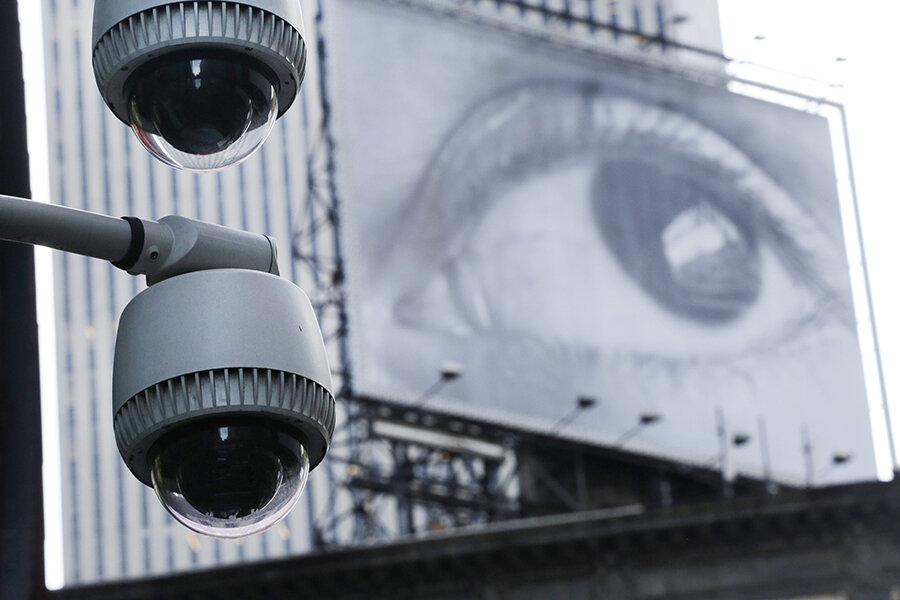Why video everywhere is a boon (and bane) for police
Loading...
| NEW YORK
Video technology and terrorism have in many ways revolutionized American policing.
Since 9/11, the New York City Police Department (NYPD) has built up a network of some 8,000 surveillance cameras constantly on watch over its streets, tunnels, and bridges. And this week police were able to glean information from grainy captured images, identify a suspect behind last week’s pressure-cooker terror bombing, Ahmad Khan Rahami, and then capture him quickly within a 48-hour span.
"That's the world we're living in now,” said newly sworn-in Police Commissioner James O'Neill, at a press conference on Monday. “Any street, any incident in New York City ... most of the time – that [incident] gets captured on video surveillance."
But what some might call the brave new world of video surveillance has had its flip side, too. Dashboard camera technology, the growing use of clipped-on body cams, and of course the presence of civilian smartphones – each has become part of a rough-and-ready system of checks and balances between police and civilians, operating now in a fast-evolving landscape in which proliferating digital lenses record more and more encounters on the street.
Indeed, on Monday, police in Tulsa, Okla. released videos of yet another encounter that left an unarmed black man dead. A Tulsa police officer, Betty Shelby, shot and killed Terence Crutcher, who appeared to have his hands raised during a traffic investigation last Friday.
It was the multiple videos of the incident, too, from both the air and on the ground, that have provided the crucial evidence for the Tulsa Police Department as it opens a criminal investigation into the officer’s actions. The US Department of Justice has opened an investigation as well.
Security over privacy?
For many civil libertarians and a growing number of police advocates, the proliferation of video surveillance has been part of long debated “devil’s bargain” during an age of terror and advancing technology: society gives up privacy for the sake of security.
“We’re constantly under surveillance, whether we’re thinking about it or not,” says Tod Burke, a professor of criminal justice at Radford University in Virginia and a former Maryland police officer. “And it certainly has aided law enforcement around the country.”
“But as the technology advances, public policy and legal cases need to keep up,” he continues. “Because you get to a point where, yeah, we have all these amazing surveillance capabilities, but how far do we want to zoom in?”
Today, there is a consensus, at least among security advocates and police reformers, that we want to zoom in quite a bit. Advocates for police reform see video evidence as crucial in their efforts to combat police brutality – evidence that can break through the “blue wall of silence” and long institutional alliance between prosecutors and police.
And as the swift capture of Mr. Rahami might indicate, such technological tools have helped keep New York City and other American urban areas relatively safe, scholars say.
Indeed, after 9/11, the NYPD’s “Ring of Steel” video surveillance system was modeled after its namesake system in London, notes Melissa Hamilton, a visiting criminal law scholar at the University of Houston Law Center, and a former police officer in Clearwater, Fla.
More than 8,000 cameras, including thousands installed by the NYPD and thousands installed by cooperating private businesses and individuals, send data to the Lower Manhattan Security Coordination Center. Officers are constantly monitoring this data, officials say.
This data also includes information from biological and chemical sensors around the city’s streets and waterways, as well as “shot-spotter” sensors and reports of suspicious packages, according to reports. The NYPD’s Domain Awareness System also analyzes the enormous amounts of data the city gleans, including that from license plate readers, crime databases, and 911 calls. Such information is critical to the NYPD’s vaunted Counterterrorism Bureau.
On Monday, former Police Commissioner William Bratton said the NYPD is developing "street light technology, where you could put literally in every street light a camera system."
Technology spreads
Many big cities – including Los Angeles, Chicago, Washington, and Baltimore – now use some variation of this technology, everything from gunshot recognition to facial recognition software, scholars say.
“Today it’s more a debate about how much do we want to provide police with additional tools?” says Ms. Hamilton. “And that question can vary as to whether you’re talking about street crime, or whether you’re talking about terror activities.”
Smaller police departments across the nation, too, have been trying to increase their surveillance capabilities. Like New York, they are enlisting the help of private businesses and individuals.
In Oregon, for example, a number of local departments have asked citizens to register their surveillance cameras to fight both crime and terrorism.
“Security cameras for business and residences such as apartment buildings are becoming ubiquitous,” Joseph Tully, a criminal lawyer and author of “California: State of Collusion,” writes in an email. It would be “a big drawback if the only surveillance that was allowed was owned by the government – but by private citizens coming together with their footage, we can all benefit.”
But when it comes to the growing cries for body cameras and greater transparency, police are pushing back, and sounding more like civil libertarians. Rank and file cops in cities such as Boston, Los Angeles, and Philadelphia have each tried to protect their on-the-job privacy, citing both basic employment rights and concerns over their personal safety.
“I think it’s human nature that when we go about our business, we don't want to have to think that we have to be filmed with everything we do,” says Hamilton.






